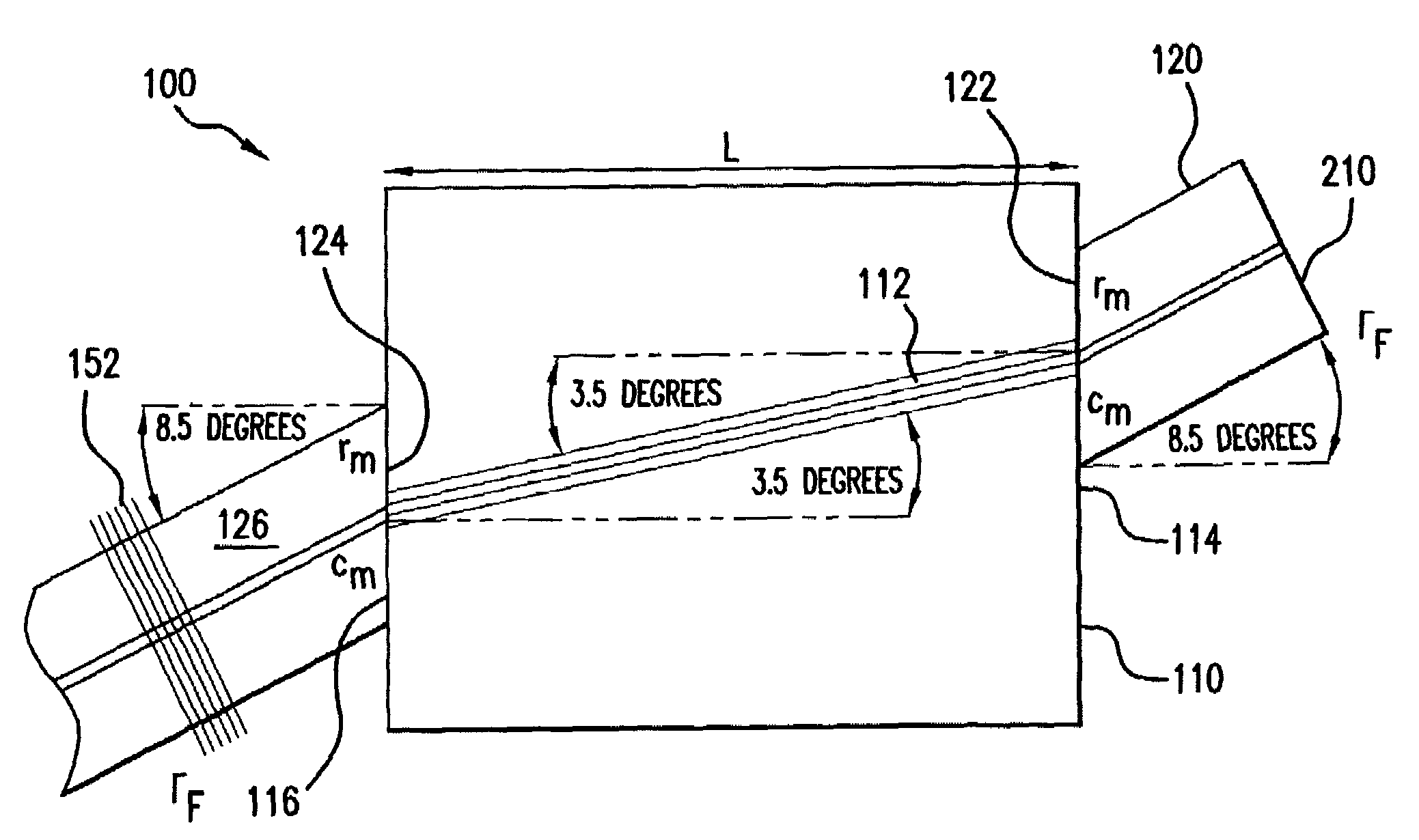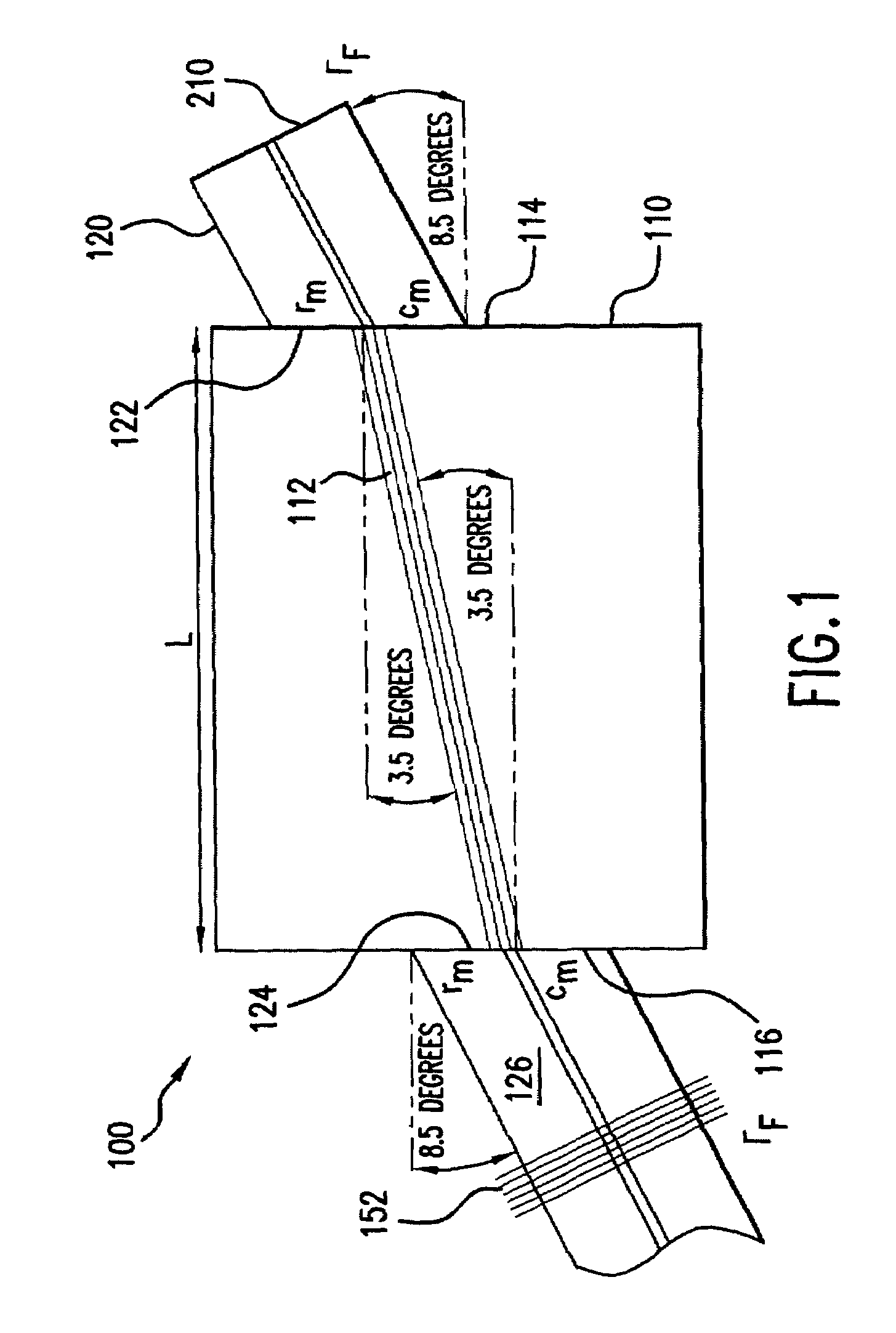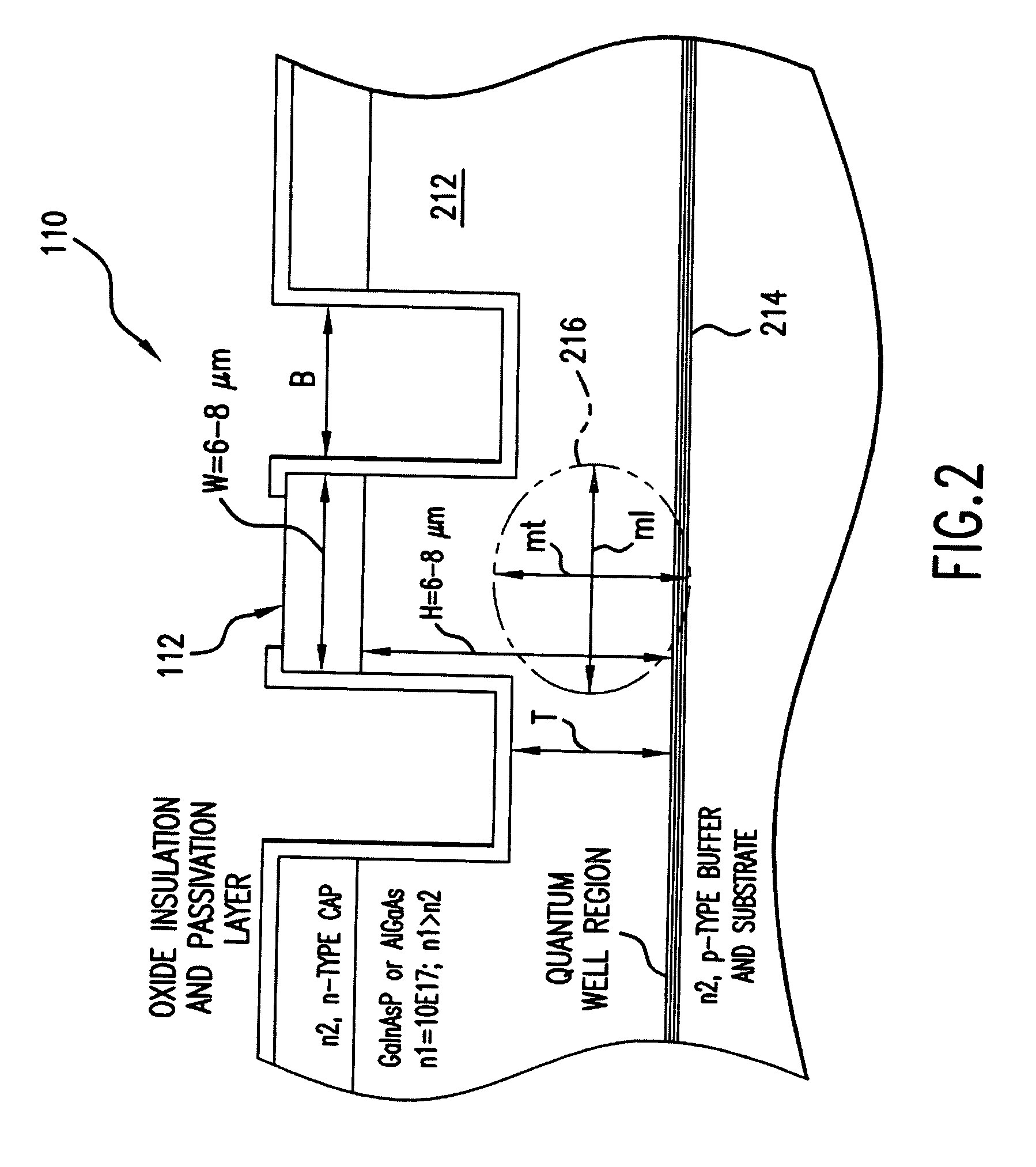Large modal volume semiconductor laser system with spatial mode filter
a semiconductor laser and spatial mode technology, applied in semiconductor lasers, laser optical resonator construction, laser details, etc., can solve the problems of single spatial mode design dilemma, achieve a larger mode size in a waveguide that supports only a lowest-order, etc., and achieve larger mode sizes and shapes. , the effect of reducing the numerical aperture of the output beam
- Summary
- Abstract
- Description
- Claims
- Application Information
AI Technical Summary
Benefits of technology
Problems solved by technology
Method used
Image
Examples
Embodiment Construction
[0024]This teaching of U.S. provisional patent application No. 60 / 263,683, filed Jan. 23, 2001, are hereby incorporated by this reference.
[0025]FIG. 1 shows an external cavity semiconductor laser system 100, which has been constructed according to the principles of the present invention.
[0026]Generally, the laser 100 comprises a semiconductor chip 110. This chip has a stripe 112, such as a ridge waveguide, which has been etched or otherwise formed in the epitaxial layers of the bulk material of the chip 110. The stripe 112 defines the optical axis.
[0027]In one implementation, the chip utilizes a trench-defined ridge. In alternative embodiments, the epitaxial layers on either lateral side of the ridge are entirely removed as in another common ridge configuration. In still other embodiments, stripes defined by regrowth or other processes are used.
[0028]According to the invention, the chip 110 is configured to generate a mode that is greater than 5 micrometers in diameter in both the t...
PUM
 Login to View More
Login to View More Abstract
Description
Claims
Application Information
 Login to View More
Login to View More - R&D
- Intellectual Property
- Life Sciences
- Materials
- Tech Scout
- Unparalleled Data Quality
- Higher Quality Content
- 60% Fewer Hallucinations
Browse by: Latest US Patents, China's latest patents, Technical Efficacy Thesaurus, Application Domain, Technology Topic, Popular Technical Reports.
© 2025 PatSnap. All rights reserved.Legal|Privacy policy|Modern Slavery Act Transparency Statement|Sitemap|About US| Contact US: help@patsnap.com



